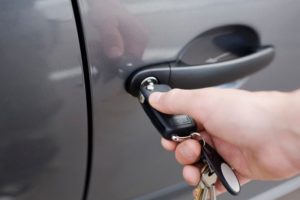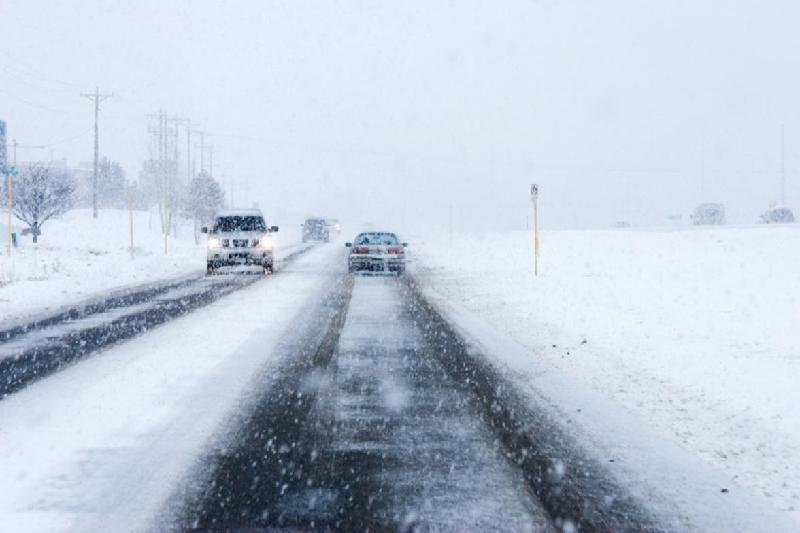
Basic elements and principle of operation of the central lock
Content
The reliable closing of the doors ensures the safety of the car and the safety of personal belongings that the owner leaves in the cabin. And if before each door in the car had to be closed manually with a key, now this is no longer necessary. For the convenience of motorists, a central lock was created, which can be opened and closed at the touch of a button.
What is central locking
Central locking (CL) allows you to simultaneously block all doors in the car at once. Of course, without the help of this mechanism, the driver could also open and close his car with a lock: not remotely, but manually. The presence of a central locking does not in any way affect the technical properties of the vehicle, therefore, manufacturers refer this mechanism to systems that provide the comfort of the car owner.
Doors can be locked using a central locking system in two ways:
- centrally (when one press of the key fob button closes all the doors at once);
- decentralized (such a system allows you to control each door separately).
The decentralized system is the most modern version of the door lock device. In order for it to perform its functions, an electronic control unit (ECU) is additionally installed on each door. In the centralized version, all the doors of the vehicle are controlled by a single unit.
Central locking features
The central locking in the car has several features that make the interaction between the system and the driver as simple and efficient as possible.
- The central lock can function successfully in conjunction with any alarm system.
- The trunk is also connected to the central locking system, but you can control its opening separately from the doors.
- For the convenience of the driver, the remote control button is located on the key fob and in the car. However, the central locking can also be closed mechanically by turning the key in the driver's door lock. Simultaneously with turning the key, all other doors of the vehicle will be locked.
In winter, during severe frosts, the elements of the central locking system may freeze. The risk of freezing increases if moisture enters the system. The best remedy for the problem is a chemical defroster, which can be purchased at a car dealership. To get inside the car, it is enough to defrost the driver's door and start the engine. When the car warms up, the rest of the locks will thaw by themselves.
System device
In addition to the control unit, the central locking system also includes input sensors and actuators (actuators).
Input sensors
These include:
- end door switches (limit switches) that transmit information about the location of car doors to the control unit;
- microswitches fixing the position of structural elements of the door lock.
Microswitches have different functions.
- Two of them are designed to fix the cam mechanism of the front doors: one is responsible for the lock signal (closing), the second is for unlock (opening).
- Also, two microswitches are responsible for fixing the position of the central locking mechanisms.
- Finally, another switch determines the position of the linkage in the lock actuator. This makes it possible to assess the position of the door in relation to the body. As soon as the door is opened, the system closes the switch contacts, as a result of which the central locking cannot be triggered.
The signals sent by each of the sensors go to the control unit, which transmits commands to the actuators that close the doors, boot lid and fuel filler flap.
Блок управления
The control unit is the brain of the entire central locking system. It reads the information received from the input sensors, analyzes it and transmits it to the actuators. Also, the ECU interacts with the alarm installed on the car and can be controlled remotely using the remote control.
Actuator
The actuator is the final link in the chain, which is responsible for the direct locking of the doors. An actuator is a DC motor that is combined with the simplest gearbox. The latter converts the rotation of the electric motor into the reciprocating movement of the lock cylinder.
In addition to the electric motor, the actuators used a pneumatic drive. For example, it was used by manufacturers such as Mercedes and Volkswagen. Recently, however, the pneumatic drive has ceased to be used.
Principle of operation of the device
The central locking of the car can be triggered both when the ignition is running and when the ignition is off.
As soon as the car owner locks the car doors by turning the key, a microswitch in the lock is triggered, which provides blocking. It transmits a signal to the door control unit and then on to the central unit. This element of the system analyzes the information received and redirects it to the actuators for the doors, trunk and fuel flap. Subsequent unlocking takes place in the same way.
If the motorist closes the car using the remote control, the signal from it goes to the antenna connected to the central control unit, and from there to the actuators that lock the doors. At the same time, an alarm is activated. In some vehicle models, when the doors are locked on each of them, the windows can automatically rise.
If the car is involved in an accident, all doors are automatically unlocked. This is signaled by the passive restraint system to the central locking control unit. After that, the actuators open the doors.
"Children's castle" in the car
Children can be unpredictable. If the driver is carrying a child in the back seat, it is difficult to control the behavior of the small passenger. Curious toddlers can accidentally pull the handle of a car door and open it. The consequences of a little prank are unpleasant. To exclude this possibility, a "child lock" was additionally installed on the rear doors of the cars. This small but very important device excludes the possibility of opening the door from the inside.
An additional lock, blocking the opening of the rear doors from the passenger compartment, is installed on both sides of the body and is manually activated.
The way the mechanism is activated depends on the make and model of the car. In some cases, the lock is activated using a lever, in some - by turning the slot. But in any case, the device is located next to the main door lock. You can clarify information on the use of the "child lock" in the manual for your car.
Double locking system
In some cars, a double locking system is used, when the doors are locked both from the outside and from the inside. Such a mechanism reduces the risk of theft of the vehicle: even if the thief breaks the glass of the car, he will not be able to open the door from the inside.
Double locking is activated by double pressing the central locking button on the key. To open the doors, you also need to double-click on the remote control.
The double locking system has an important disadvantage: if the key or locks malfunction, the driver himself will also not be able to open his car.
The central locking in the car is an important mechanism that allows you to close all the doors of the vehicle at the same time. Thanks to additional functions and devices (such as a "child lock" or a double locking system), the driver can maximally protect himself and his passengers (including small children) from the sudden opening of the doors during the trip.
